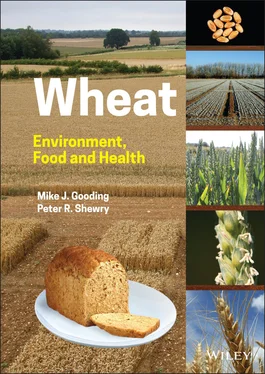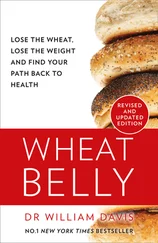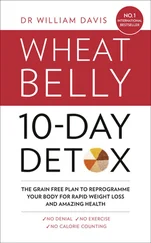Source: Data are means of 2015–2019 from FAOSTAT (FAO 2021).

Figure 1.2 The global distribution of wheat production. Shading intensity represents estimated yield × area per pixel. Further details on the climate of the labelled major areas of production given in Figure 1.6.
Source: Data from Monfreda et al. (2008). Mapping modified from Andrew MT, CC BY‐SA 3.0, https://commons.wikimedia.org/w/index.php?curid=9643590
1.1.2 Wheat Supply and Demand
As stated previously, there have been significant pressures to invest in and therefore further increase the dominance of the major cereals. There is undoubtedly a trade‐off between increasing the efficiency of production through specialization and increasing the resilience of systems through exploiting diversity (Urruty et al. 2016; Dardonville et al. 2020). Nonetheless, investment and focus on wheat have enabled production to be increased by more than threefold over the past 60 years ( Figure 1.4). Indeed, the rate of growth has significantly exceeded that of the number of humans on the planet, and has met further demands arising from changing eating habits. Of note is the increase in the per capita availability of wheat between 1960 and 1990 in populous countries such as India and China, despite rapid population growth during the same period ( Figure 1.3). Furthermore, the increase in global wheat production since 1960 occurred without using more land (unlike rice, maize, and soybean). Global production of wheat, therefore, closely follows the increases in yield per unit area ( Figure 1.4). In other words, we have become much more efficient in the use of land for wheat production (Dibb 2000). There are clear threats to being able to sustain or increase land‐use efficiency to produce wheat, but these challenges need to be set against the environmental impacts of using more land or the difficulties of achieving significant changes to human diets (e.g. Smith et al. 2018; Cassman and Grassini 2020). It is salutary to reflect that many past civilisations have failed to meet the challenge of satisfying short‐term demands for food, without severely impairing the ability of future generations to do likewise (Hillel 1991; Montgomery 2007; Mithen 2012). However, given current trends in population growth and diet, which also drive increased use of grain for livestock production, it is predicted that demand for grain could increase by around 50% between 2020 and 2050. It is highly unlikely that new crops and/or novel cropping systems will be able to provide the intensification of production that will be required to meet this increased demand. This argument will hold even if the increase in demand is limited to 25% by dramatic changes to the relationships between income, urbanization, and diet seen over recent decades (Cassman and Grassini 2020). There is, therefore, continuing pressure to increase the efficiency with which we use land to produce wheat and other grains.
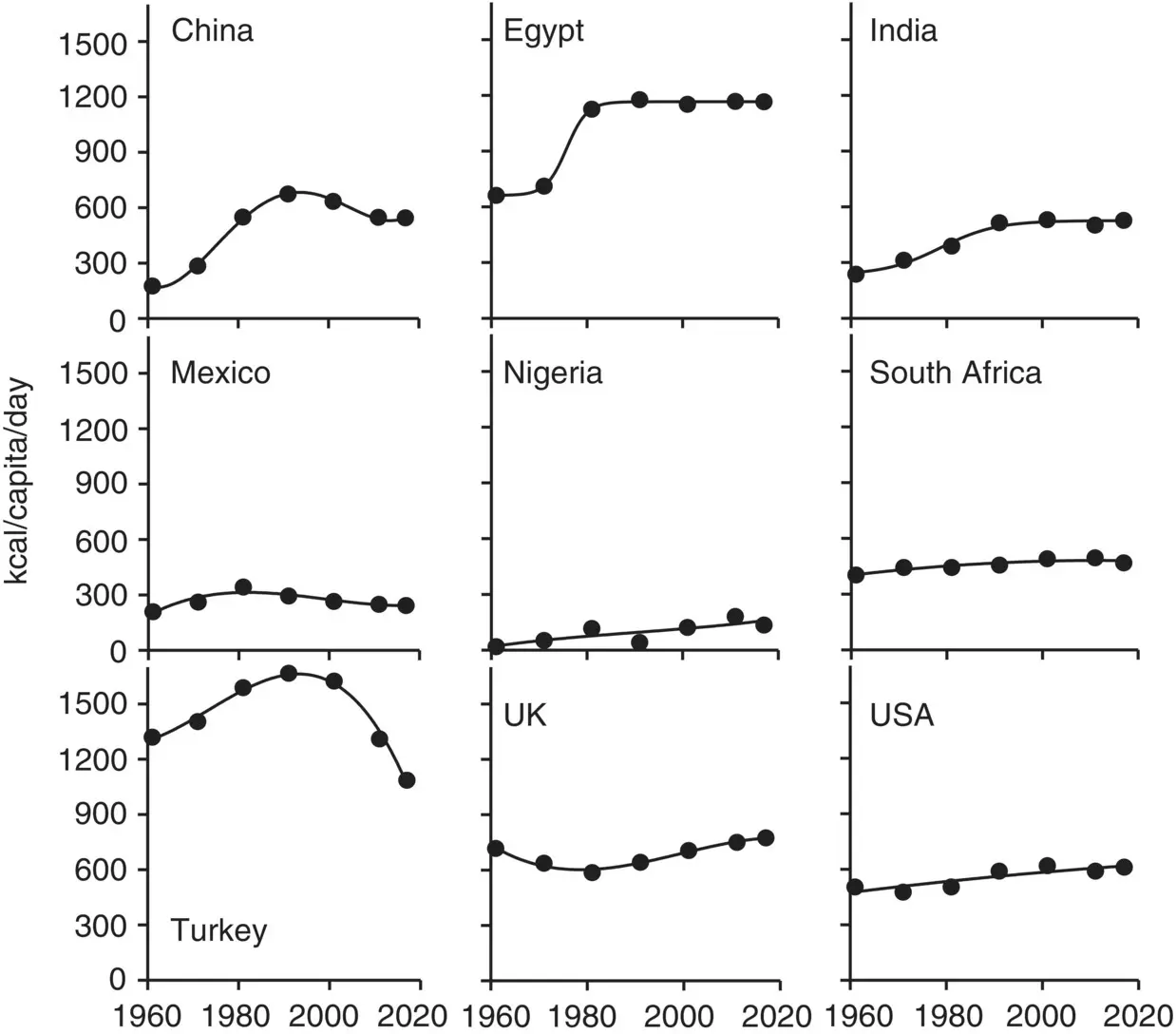
Figure 1.3 Changes in the availability of wheat (kcal/capita/day) in the diets of nine countries.
Source: Data from FAOSTAT (FAO 2021).
Despite the past success in increasing grain production ( Figure 1.4), the last 30 years have seen food price spikes ( Figure 1.5) associated with perturbations in the supply and demand for wheat. These shocks have resulted from many factors, including extreme weather events in major wheat‐growing areas, changes in land‐use policy (particularly regarding biofuel production) affecting the area of food grains, the oil price, the behaviour of financial markets, and the buying and selling strategies of major wheat exporters and importers seeking to secure domestic supplies (Tadesse et al. 2016). The most dramatic spike in recent decades was in 2008 ;this represented a fourfold increase in the wheat price compared to that of eight years earlier ( Figure 1.5). The origins of this spike have been attributed to drought, crop disease, grain use for biofuels (and therefore the oil price), and increasing demand resulting from the economic growth of China and India. Wheat price spikes result in increased poverty and have a disproportionately harmful effect on the livelihoods and well‐being of the poor (Anderson et al. 2013).
Table 1.1 Production, yield, and area of wheat in the world and selected regions and countries.
Source: Data are means of 2016 to 2018, from FAOSTAT (FAO 2021).
| Region/Country |
Production (10 6t) |
Yield (t/ha) |
Area (10 6ha) |
| World |
752 |
3.5 |
217.3 |
| Regions |
|
|
|
| Asia |
331 |
3.3 |
99.3 |
| Europe |
256 |
4.1 |
62.7 |
| Americas |
114 |
3.3 |
34.7 |
| Africa |
26 |
2.6 |
10.1 |
| Australia/NZ |
25 |
2.2 |
11.5 |
| Top 10 countries |
|
|
|
| China |
133 |
5.4 |
24.5 |
| India |
97 |
3.2 |
30.3 |
| Russian Federation |
77 |
2.9 |
27.1 |
| USA |
54 |
3.3 |
16.3 |
| France |
35 |
6.5 |
5.4 |
| Canada |
31 |
3.3 |
9.3 |
| Pakistan |
26 |
2.9 |
9.0 |
| Ukraine |
26 |
4.0 |
6.4 |
| Australia |
25 |
2.3 |
11.5 |
| Germany |
23 |
7.3 |
3.2 |
| Other countries |
|
|
|
| UK |
14 |
8.0 |
1.8 |
| Kazakhstan |
15 |
1.3 |
11.9 |
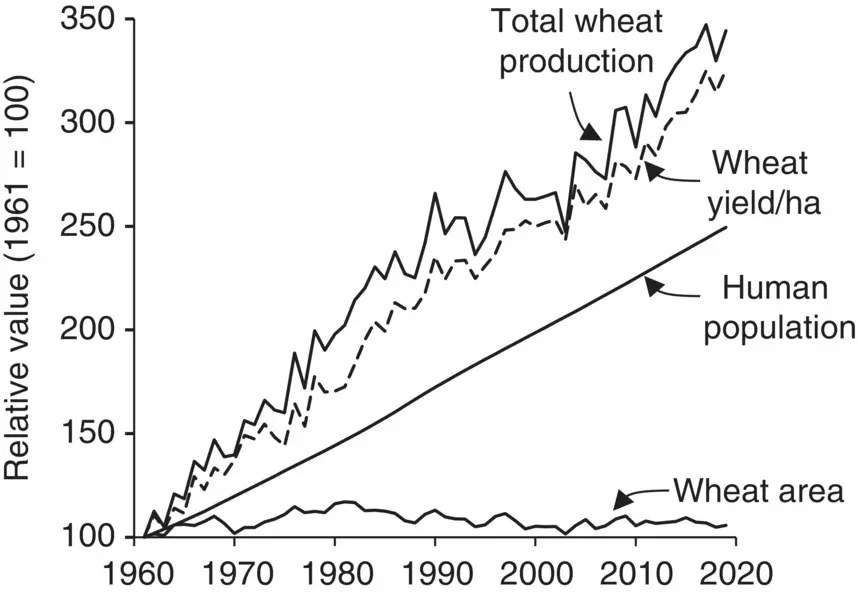
Figure 1.4 Growth in wheat production since 1961 compared with the wheat area, the wheat yield per unit area, and human population growth.
Source: Data from FAOSTAT (FAO 2021).
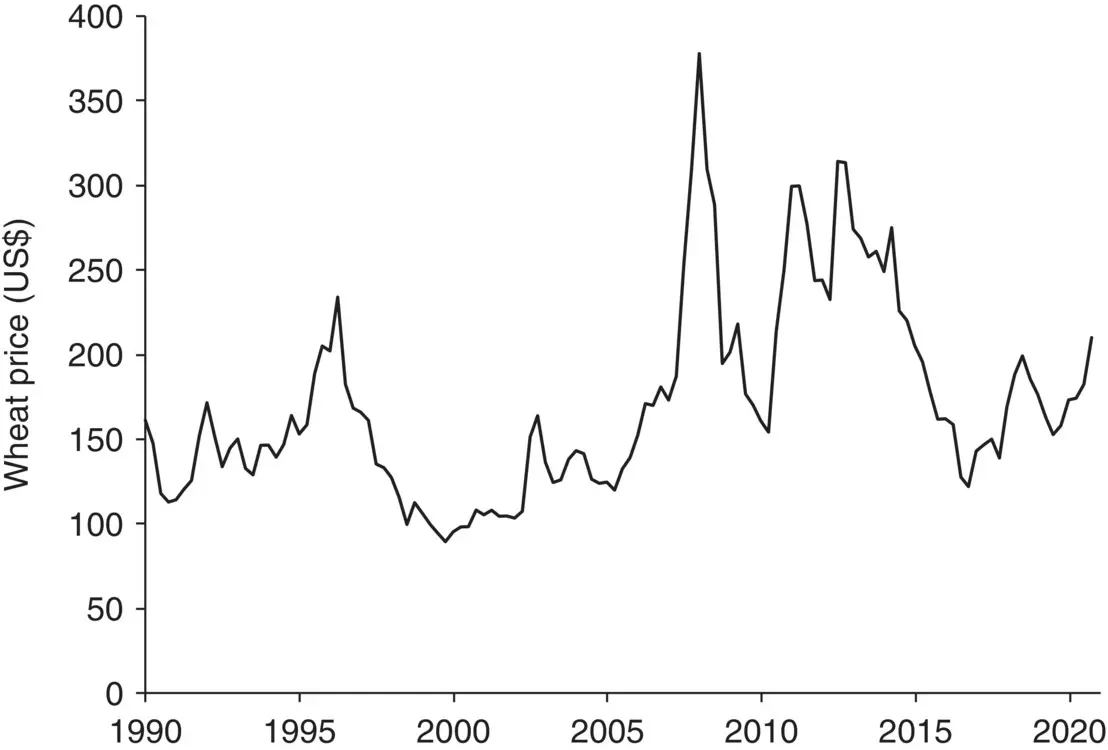
Figure 1.5 The world primary commodity price of wheat (IMF 2021).
Much of the current success of wheat, as well as the hopes for its future production, relies on the adaptability of different cultivated varieties ( cultivars ) of wheat to a wide range of growing environments and production systems. Wheat production stretches through temperate areas, extending into the sub‐tropics and the sub‐polar regions, but also includes the tropical highlands of East Africa. Major areas of production ( Figure 1.2) include river plains such as the Indo‐Gangetic plain ( Figure 1.6h) and the North China plain ( Figure 1.6i), where wheat is often irrigated and grown in the dry winters while rice and maize are common summer crops. By contrast, wheat is also grown over large mid‐continental expanses that would have originally supported extensive grasslands and/or forests such as the Eurasian Steppe ( Figure 1.6e), the Canadian Prairies ( Figure 1.6a), and the plains of the USA ( Figure 1.6c). At high latitudes, wheat is frequently grown in the summer months to avoid the harsh winters ( Figure 1.6a). In semi‐arid regions, such as some areas in the Pacific Northwest ( Figure 1.6b), rainfed wheat is often grown every other year whilst water is replenished in soils left to fallow in intervening years. In contrast, intensive production in Oceanic NW Europe ( Figure 1.6e) is made possible by evenly distributed rainfall and moderate temperatures. A wet, mild environment is also experienced in the Humid Pampas of Argentina ( Figure 1.6d), where three crops are often grown (e.g. wheat, soybean, maize) in two‐year rotations. The wild wheats still growing in and around the eastern Mediterranean (Zohary et al. 1969), like their modern crop counterparts, are adapted to grow in the mild, wet winters, maturing before the hot dry summers ( Figure 1.6f). The Australian wheat belts span numerous climatic zones, including the Mediterranean pattern ( Figure 1.6j).
Читать дальше
